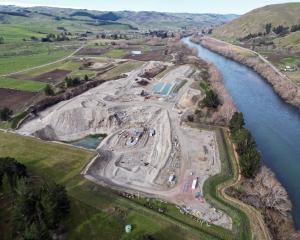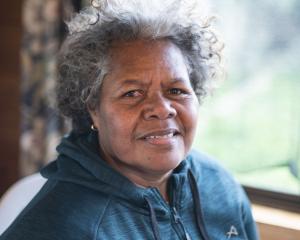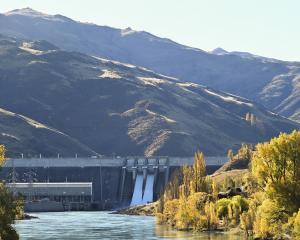Alexandra, Clyde and Cromwell might need to erect multistoreyed buildings in the next 20 years if Central Otago's population grows by the up to 60% Statistics New Zealand predicts.
Figures released this week show the area's population was estimated at 17,100 in 2006 and was projected to rise as high as 27,300 by the year 2031 - an increase of 10,200 people.
Central Otago District Mayor Malcolm Macpherson said the council was "accustomed to quite strong growth" in the area.
He believed much of the growth would occur in Cromwell, which was well set up for growth.
"They've got room to expand and the facilities to cope."
However, as the population grew closer to 27,300, he believed land would become more scarce.
Dr Macpherson said communities such as Clyde could not expand much further, and more intensive land use might become necessary.
"We will rezone land to make it available as we can.
But there will be debates about how much land we can make available and where it will be.
"It is likely we will have to start building upward rather than outward.
There could be multistoreyed buildings in Clyde within the next 20 years.
"Inevitably, it will happen in Cromwell and Alexandra too."
Statistics New Zealand's projections showed Otago's population could grow up to 30% during the next 20 years.
The figure is driven mainly by the Central Otago, Queenstown-Lakes and Dunedin city population growth.
Queenstown Lakes district's population could more than double by 2031.
In 2006, the estimated population of the Queenstown-Lakes district was 24,100.
But due to a predicted flood of migrants, the population is expected to rise as high as 48,700.
Under the medium prediction, the Queenstown-Lakes district has the highest projected population growth rate of any other territorial authority in New Zealand, with an average annual increase of 2.2%, from 24,100 in 2006 to 41,700 in 2031.
Queenstown-Lakes Mayor Clive Geddes yesterday said he was "comfortable" with the figures.
The council had been planning for an increasing population for many years and began collecting its own population data in 2000.
Its four-volume long-term community plan includes a full volume on population growth data, which informs the council's decisions about infrastructure investment and land zoning, plus influences its response to future community needs.
The council has studied dwelling capacities and commercial and industrial land needs.
The plans have identified, among other things, that Queenstown is unlikely to have enough appropriate land to meet commercial land-use demands, that affordable housing is likely to be an issue in both towns, and both central business districts suffer traffic congestion.
Mr Geddes said Statistics NZ's information confirmed the council's projections were "about right".
The council's growth strategy is targeted at 2029 and focuses on both the normal residential population as well as visitors.
"The bit we do that they don't is also look at our peak population.
"That's the number of people who are here when the district is full.
"So that's Christmas, New Year, Warbirds Over Wanaka, the winter months.
"We know that at peak times, our average day-population doubles," Mr Geddes said.
That means at Christmas and New Year, the average daily population now of about 35,000 (including residents and visitors) increases to about 70,000.
Dunedin city is the only other territorial authority in the region to expect significant population growth, with an increase from 122,300 (2006) to as much as 144,300 in 2031.
Dunedin City Mayor Peter Chin welcomed the projections and said in terms of infrastructure, Dunedin was well prepared for the growth.
"We're ready, even now. We're already working towards this projection.
"That's why we are refurbishing the Town Hall, building the stadium, upgrading water supplies. Basically, it's upgrading all the services we've got here."
Under the medium projections, Otago will be one of 13 New Zealand regional council areas to be home to more people in 2031 than in 2006.
The West Coast and Southland are the only regions projected to have fewer residents in 2031.
Nationally, population growth is projected to slow during the next 20 years.
On average, births are projected to remain stable in number, reflecting lower fertility rates.
But in contrast, deaths are projected to increase in all regions as the population in the older age brackets increases.












